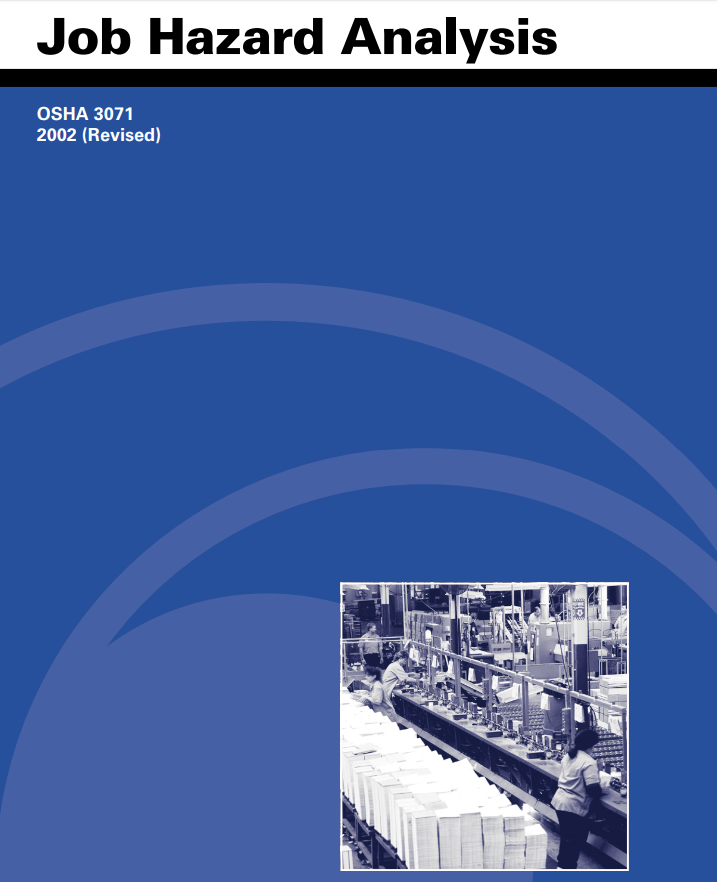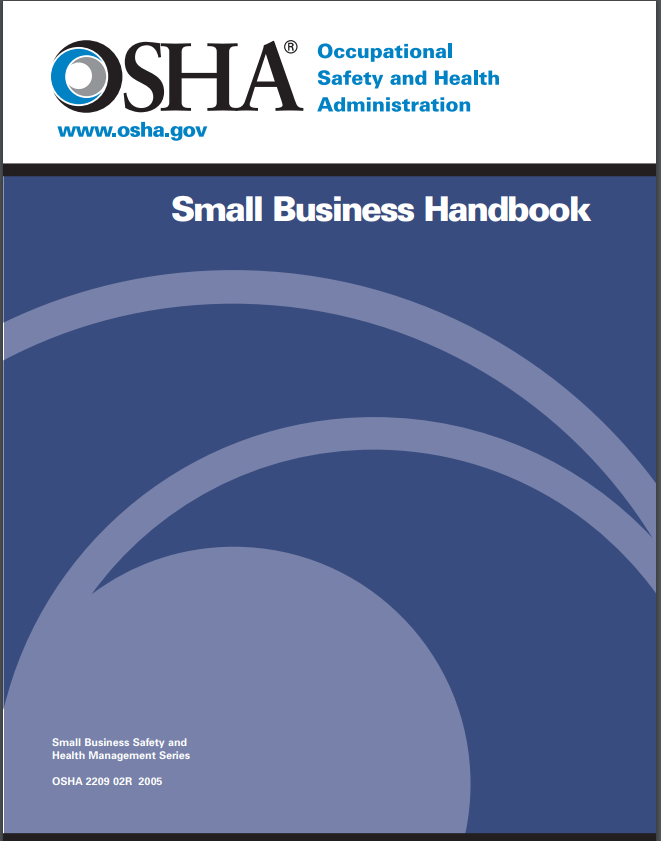There's one mistake that causes more on-the-job injuries than any other. It's not faulty equipment, improper training, or lack of protective gear.
It's thinking your workplace is safer than it is.
More than 70 million workdays were lost in 2018 due to worker injuries, according to the latest data from the National Safety Council. That year, 5,250 workers died on the job, and 2.8 million were injured. That's 3.1% of all workers.
It's tempting to assume those injuries happen in dangerous jobs like forging and roofing, but injury rates for retail workers were 3.5%, higher than manufacturing (3.4%) and construction (3%). The prime cause of lost-day injuries?
Overexertion and sprains, followed by slips, trips, and falls, the U.S. Bureau of Labor Statistics (BLS) reported. Those injuries can happen in any business, to any employee.
You can help protect your employees from unseen hazards with measures such as a job hazard analysis.
Overview: What is a job hazard analysis?
A job hazard analysis (JHA) is an evaluation of job tasks to identify hazards before they occur and recommend ways to reduce them. JHAs focus on the relationship between the worker, the task, the tools, and the environment.
Job hazard analysis vs. job safety analysis: What's the difference?
A job safety analysis (JSA) is similar to a JHA, and the terms are often used interchangeably. Some safety professionals, though, consider a JHA a broader risk assessment than a JSA, which focuses more narrowly on the tasks of a specific job.
Does OSHA require a job hazard analysis?
OSHA does not require employers to conduct a JHA. Yet the agency does require employers to "provide a workplace free from serious recognized hazards" and meet standards of the Occupational Safety and Health Act (OSH).
To meet employer responsibilities under the law, employers must cover many job hazard analysis techniques, including:
- Examining the work environment to ensure compliance with OSH
- Ensuring tools and equipment are safe and properly maintained
- Establishing safety protocols and communicating them to employees
So, while you're not required to complete a formal JHA for every job in your company, the principles can be applied more broadly to meet OSHA standards.
Twenty-six states have their own OSHA-approved laws and standards that may differ from federal requirements. Be sure to check your state's regulations as well as the federal rules when incorporating safety into your human resource (HR) operations.
OSHA provides a full guide to JHAs, a Small Business Handbook, and other resources to help small businesses make their work environments safer. In fact, OSHA consultants will come to your facilities for free and do the analysis for you. All you have to do is agree to address the hazards they uncover.
As far as investments go, that's pretty sweet. It's even sweeter when you consider that employers save around $4 for every dollar they spend on safety, according to OSHA.
How to perform a job hazard analysis
Before launching your analysis, it's important to understand that safety is a group effort. Through each step in your JHA, you need the insights, ideas, and buy-in of your employees.
JHA safety begins with these steps.
Step 1: Identify known hazards
This first step in your JHA is a combination of checking your gut, brainstorming, and looking at your workplace with new eyes. Instead of focusing on productivity and efficiency, look at every task your employees perform through the lens of worker safety.
The goal of this step is to assess exposures so you can prioritize them into a job hazard analysis checklist.
Here are areas to cover:
- Look at your record: Have you had accidents or near misses in the past? What were they and how did they happen? HR software that tracks employee absences and injuries can make this analysis easier.
- Review statistics: In addition to prior incidents, look at trends for your industry. What are the most common injury types? You can find the latest stats on the BLS website.
- Note known hazards: Have your employees noticed hazards in your workplace? Write down all the hazards your team can identify.
- Assess exposure: How likely are the risks on your list? How severe are the potential consequences of each hazard?
Step 2: Implement quick fixes
Before moving on with your analysis, OSHA recommends that you immediately address any clear hazards in your workplace through these steps:
- Consider controls: Brainstorm ideas for eliminating obvious hazards. Controls may include modifying tasks, using safety gear, or changing tools or equipment.
- Address urgent issues: Implement controls to eliminate hazards immediately.

OSHA provides a comprehensive guide for conducting a JHA. Image source: Author
Step 3: Prioritize job hazards
Based on your analysis, rank your exposures from greatest to least risk. Your JHA will address job hazards in that order.
- Assess severity: Use a numeric scale to quantify the seriousness of injuries that could result from each of the hazards you've identified.
- Rate likelihood: Assign a second number to reflect the likelihood of each risk. Consider your own accident record and injury statistics for similar businesses when ranking probability.
- Prioritize exposures: Multiply your severity and likelihood scores to assign a rank to each hazard.
Step 4: Break down jobs into tasks
This is where the real work of your JHA begins. Working from greatest exposure down, examine each job on your list as follows:
- Observe the work: Watch employees perform the task in question. OSHA suggests videotaping the work for further observation.
- Record steps: Break down tasks into a reasonable number of steps. For example, to prepare for lunch, a cook might complete the tasks of unloading food from storage, heating water, and chopping vegetables. Write down each step in the work that might present a unique hazard. For example, unloading heavy boxes of food, working with vats of boiling water, and chopping vegetables present very different risks.
- Review your findings: Run through your task lists with the employees you observe. Are you missing any important steps?
Step 5: Identify hazards of each task
Now look at the tasks critically with your team as follows:
- Consider exposure: Who or what is at risk? What could go wrong? What equipment or tools are involved?
- Look at triggers: What precipitates the hazard? How might a problem arise? For example, a worker mops the restroom floor. This triggers a slip-and-fall hazard.
- Assess the environment: Are there hazardous conditions surrounding the employee? For example, a tile floor is slippery when wet. Steam poses a serious burn threat.
- Identify consequences: How severe an injury could this cause? What would the worst possible outcome be?
- List contributing factors: Note variables that could compound injuries or make them more likely. For example, weather is a contributing factor for transportation hazards.
- Evaluate likelihood: Once again, consider the likelihood of injury for each task.
- Read OSHA regulations: Review OSHA regulations for your industry to ensure you are meeting standards for each of the tasks you examine.
Example: For the job of shipping clerk, employees (exposure) in a busy receiving area with a lot of heavy equipment moving through (environment) must unload shipping crates and place boxes on shelves (triggers). The boxes weigh from 20 to 60 pounds, and the shelves go from floor to ceiling (contributing factors). The team identifies a back sprain hazard and ranks it as highly likely because the store has already had one incident.

OSHA’s Small Business Handbook is an excellent guide for safety planning. Image source: Author
Step 6: Identify control and prevention measures
Working with employees who do the tasks, brainstorm measures you could take to mitigate the risks. Put everything on the table, whether it seems feasible or not. Potential controls include:
- Changing tasks: Does this task need to be done at all? Must it be done this way, or can you think of other ways to get the job done?
- Providing training: Sometimes it's not the task but the way people are handling it that poses a hazard. Are employees skipping safety measures, or even disabling safety controls to go faster? Are they trained to use equipment properly and safely? Do they understand that safety comes before speed and productivity?
- Modifying equipment or tools: Do your tools and equipment feature the latest safety features? Are they well maintained? Are there modifications you could make to enhance their safety?
- Using protective gear: Can you find personal protective equipment that would eliminate or reduce your exposure?
- Automation: Is there a machine or tool that can do the task more safely?
Continuing with the example of sorting heavy boxes onto shelves, possible controls would be wearing back braces while lifting boxes, training employees in proper lifting techniques, using equipment to do the heavy lifting, or not sorting boxes onto high shelves.
Once you've completed JHAs, you have a framework for a comprehensive safety program. OSHA recommends updating JHAs periodically to keep pace with ever-changing technologies, tasks, and employees.
Safety pays
Like many important things, safety can be neglected not because we don't care, but because we're busy caring about the thousand other things that are screaming for our attention every day.
Considering that small businesses can get free evaluations from the experts, there's no need to wait for a rainy day or hope for the best. Reach out, use the available resources, and deputize a committee if you haven't already.
Your business will reap the rewards, and employees will appreciate your commitment to keeping them safe at work.
Our Small Business Expert
We're firm believers in the Golden Rule, which is why editorial opinions are ours alone and have not been previously reviewed, approved, or endorsed by included advertisers. The Ascent does not cover all offers on the market. Editorial content from The Ascent is separate from The Motley Fool editorial content and is created by a different analyst team.